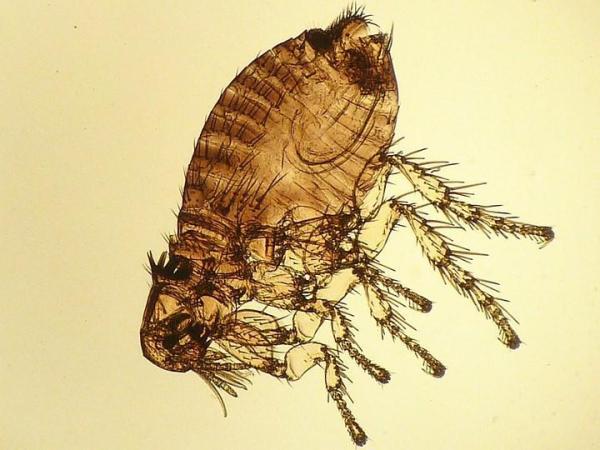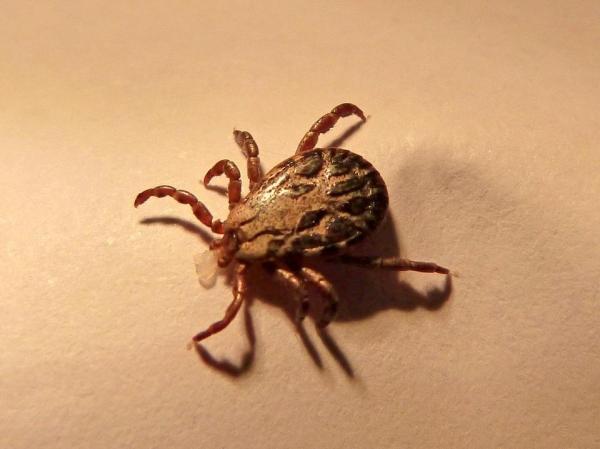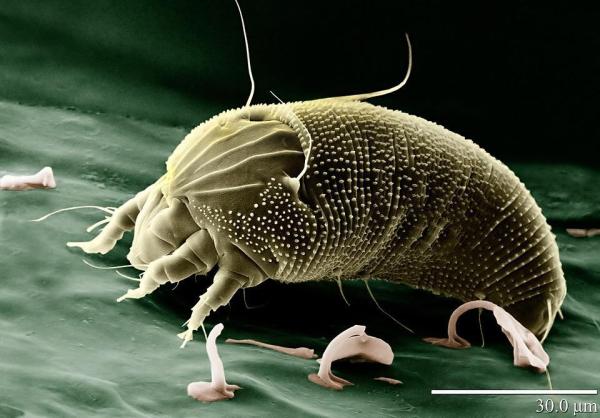External Parasites of Dogs



See files for Dogs
It is very important to know about the external parasites that can affect your dog in order to quickly spot their appearance. Milder cases may involve discomfort and itching but, if the situation worsens, your best friend's life and health can be severely affected. Don't forget that if the infected dog is a puppy, you should go to the vet immediately.
In this AnimalWised article we will talk about the external parasites of dogs; small guests that live on the body surface, feeding directly on your pet. A dog's external parasites can include fleas, ticks, mites and other insects whose life cycle is spent on the dog's body.
Fleas
Fleas are small parasites that are dark brown in color, which live in the fur of dogs and other animals. They are so small and fast that it's difficult to spot them, but it's easy to detect their excrement.
They grow in warm and humid climates, so depending on the climate of your area, they can constitute a seasonal or permanent problem. Fleas suck the dog's blood and, in doing so, can infect it with infectious diseases. Additionally, dogs that have a massive flea infestation can end up developing anemia.
Dogs can also be allergic to fleas' saliva, causing them to excessively scratch themselves and cause themselves harm. Although it's not very common for fleas to transmit contagious diseases to dogs, this can be the case with teniasis, heartworms and even bubonic plague.
Find out how to remove fleas from dogs for more information.

Ticks
Ticks are large, easy-to-see parasites. They can be felt relatively easily when petting the dog, and they are really dangerous.
When fully grown, ticks bury themselves into the skin of dogs and other mammals, sucking their blood before reproducing, and they infect them with very serious diseases. Ticks can cause anemia when the dog is heavily infested, and they can even produce a paralyzing shock.
If you notice that your dog has ticks, you should never try to pull them out. Instead, you should use specific material that you can find in pet shops to remove them or go immediately to the vet.

Mange mites
Sarcoptic mange mites
Sarcoptic mange mites are microscopic parasites that settle on the dog's skin. As the name suggests, they cause mange. These parasites can spread to other animals, including humans.
These mites cause skin irritation, hair loss and scabs. If the disease goes untreated, it can cause other organic disorders and the dog can die.
Demodectic mange mites
Demodectic mange mites are elongated and microscopic. They make up part of the microfauna of the dog's skin, and are not highly contagious. The disease occurs when the concentration of these mites increases, although it is not known for sure what causes this to happen.
These mites produce the so-called demodectic mange, which can come in two varieties: localized and generalized:
- Localized demodectic mange is a mild problem that usually goes away on its own. Its symptoms include localized hair loss, flaking and dark spots.
- Generalized demodectic mange is a serious condition that can kill a dog. It is initially presented with localized hair loss, but over time collateral complications occur. The most common complication is the bacterial infection of the skin or pyoderma, including itching, swollen glands, discharge and bad odor.

Ear mites
Ear mites are similar to sarcoptic mange mites, but are slightly larger in size. They are spread by direct contact between the dog and other infected animals, or by coming into contact with surfaces where these parasites are found.
These mites settle in the ear canal and adjacent areas, and cause the dog an annoying irritation and itching. The dog constantly scratches itself to ease its discomfort, and at times can do so quite violently. The dog may frequently rub its head against the walls and other rough surfaces, and can even hurt itself by scratching too much.
A common symptom of ear mites in dogs is when they shake their head constantly. It is also common to see dark discharge from its ear canal. If the infection is very severe, the dog will walk around in circles.

Treatment of external parasites in dogs
Just like any medical treatment for dogs, the treatment of external parasites should be performed or at least recommended by a vet. Even though there are many antiparasitic drugs freely available on the market, it is recommended that the vet decides what course of treatment should be followed in each case.
Don't forget the importance of preventing the onset of all of these problems by using pipettes or anti-parasitic collars. Other good ways of prevention are bathing your dog and cleaning the dog's ears regularly.
This article is purely informative. AnimalWised does not have the authority to prescribe any veterinary treatment or create a diagnosis. We invite you to take your pet to the veterinarian if they are suffering from any condition or pain.
If you want to read similar articles to External Parasites of Dogs, we recommend you visit our Parasitic diseases category.










